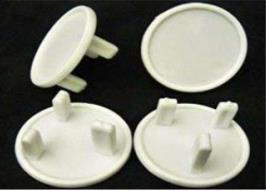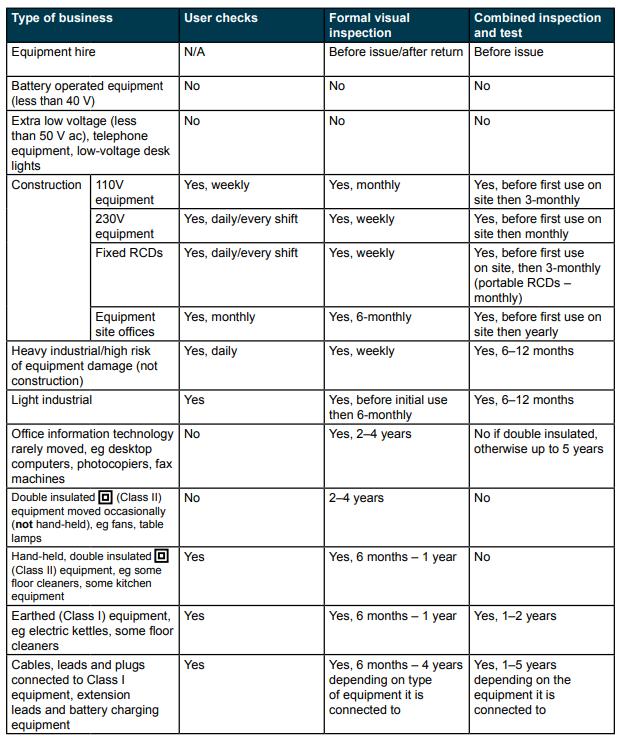
Electrical Equipment Testing Policy (formally known as PAT)
Version: V3
Ratified by: Finance and Investment Committee
Date ratified: 03/01/2024
Job Title of author: Head of Health, Safety and Compliance
Reviewed by Committee or Expert Group Property, Health and Safety Steering Group
Equality Impact Assessed by: Head of Health, Safety and Property Steering Group
Related procedural documents

Review date:
HSPOL08 Health and Safety at Work Policy
HSPOL03 Medical Devices Management Policy and Procedures
03/01/2026
(2 years from ratification or significant change)


It is the responsibility of users to ensure that you are using the most up to date document template – i.e. obtained via the intranet
In developing/reviewing this policy Provide Community has had regard to the principles of the NHS Constitution.
Version Control Sheet
Version Date

Author Status Comment
V1 September 2018 Head of Estates and Facilities Ratified New Policy
V2 December 2022 Health, Safety, Fire and Security Manager Updated, policy reviewed
V3 Jan 24 Head of Health, Safety and Compliance Review and frequency reviewed. EET is the new name for PAT


1. Introduction
The 5th Edition removes the mobility requirement of previous versions of the Code of Practice – and hence changes the name of the activity from Portable Appliance testing (PAT) to Electrical Equipment testing (EET).
The Health & Safety at Work Act etc. 1974 (sections 2, 3 & 4) imposes a general duty of care on both employer and employee to ensure the safety of all persons using work premises.
There are also specific legal requirements relating to the use and maintenance of electrical equipment that are contained within the Electricity at Work Regulations (1989), The Provision of Use of Work Equipment Regulations (PUWER) and in particular, the IET Code of Practice for the In service Inspection and Testing of Electrical Equipment (5th Edition).
These regulations apply to all work activities and place requirements upon employers, self-employed and employees to control risks that may arise from the use of electrical equipment.
This policy outlines Provide’s strategy to help achieve a Safe System of Work for the inspection and testing of electrical appliances. As such, the policy identifies key requirements within the relevant legislation and sets out a framework to facilitate compliance within the context of good practice.
2. Purpose
Provide recognises its duty of care under the Health and Safety at Work etc. Act 1974, The Workplace (Health, Safety and Welfare) Regulations 1992 and more specifically under the Electricity at Work Regulations 1989 to ensure, so far as is reasonably practicable, the health and safety of their patients, staff, residents and visitors.
The purpose of this policy is to provide appropriate guidelines and procedures to ensure that Provide complies with its statutory duties to manage the risks associated with the use of electrical equipment under the above regulations. The principles of this policy shall apply to all work situations where electrical equipment is used.
Provide shall adopt all reasonably practicable means to eliminate hazards and reduce the risk of injury or damage arising from the use of electrical equipment. Management have a legal responsibility for ensuring compliance with relevant legislation pertaining to electrical equipment. However, there is also a statutory duty placed upon the users of such electrical equipment to follow any relevant policies and procedures put in place.

3. Definitions
Electrical Equipment
Any electrical item which can or is intended to be moved whilst connected to an electrical supply. This includes items such as televisions, computers, fridges etc.
Medical Electrical Equipment
Any electrical item which can or is intended to be moved whilst connected to an electrical supply. This includes items such as suction machines, defibrillators, air beds etc.
User
This is the person who uses the equipment to carry out their daily duties whilst at work. (Appendix C)
User checks
Equipment is looked at by the user prior to use, in order to check for signs of damage to, for example, the equipment casing, lead or plug top. (NB: this does not include opening the plug top) Appendix D
Formal Visual Inspection
This is when equipment is looked at by a competent person (not necessarily an electrician) to check for signs of damage to the equipment casing, lead or plug top, including checking the fuse within the plug top.
Combined Test and Inspection
Equipment is looked at by a competent person (not necessarily an electrician) to check for signs of damage to the equipment casing, lead or plug top. This will include checking the fuse within the plug top and carrying out further specialised tests using an appropriate test instrument.
Competent Person
This is defined as a person with sufficient knowledge, understanding and skills necessary to check the safety of electrical appliances/equipment. This maybe demonstrated by appropriate training and/or experience in testing and inspecting electrical appliances.
CE Mark/UKCA Mark
CE marking is a declaration by the manufacturer that the product meets all the appropriate provisions of the relevant legislation implementing certain European Directives.
CE marking gives companies easier access into the European market to sell their products without adaptation or rechecking. The initials “CE” does not stand for any specific words, but are a declaration by the manufacturer that its product meets the requirements of the applicable European Directive.
The UKCA mark - From the 1st January 2023, all products placed on the British market are required to be UKCA marked (medical devices from 1st July 2023). The UKCA mark covers all good that previously held the CE mark.

British Standard Kite Mark
This demonstrates that the British Standards Institute has checked the manufacturer’s claim that its product meets the standard. The kite mark can still be found on some items of electrical goods; however, the CE mark is more prevalent today.
Electric Shock
Voltage as low as 50 volts applied between two parts of the human body causes a current to flow that can block the electrical signals between the brain and the muscles. This may have a number of effects, including: -
• Stopping the heart completely
• Preventing the person from breathing
• Causing muscle spasms
The exact effect is dependent upon a large number of things, including: -
• The size of the voltage
• Which parts of the body are involved
• How damp the person is
• Length of time the current flows
Electrical shocks from static electricity such as those experienced when getting out of a car or walking across a man-made fibre carpet can be at more than 10,000 volts, but as the current flows for a very short time, there is no dangerous effect on a person.
However, static electricity can cause a fire or explosion where there is an explosive atmosphere
4. Duties
Under the Electricity at Work Regulations 1989: -
• It is duty of every employer and self-employed person to comply with the provisions of these regulations in so far as they relate to matters which is within their control.
• It is duty of every employee whilst at work to co-operate with their employer so far as is necessary to enable any duty placed upon that employer by the provisions of these regulations to be complied with. Also to comply with the provision of these regulations in so far as they relate to matters which are within their control.
Estates and Facilities Team
To ensure that electrical equipment (excluding most medical equipment) is formally inspected and tested by competent persons at regular intervals appropriate to the level of risk.
Medical Equipment
MEMs to ensure that most medical electrical equipment is formally inspected and tested by competent persons at regular intervals appropriate to the level of risk.
Directors
Should ensure that this policy and its guidelines are implemented in all areas they are responsible for, and that their staff are made aware of the procedures to follow when using electrical equipment/appliances.

5. Consultation and Communication
This policy applies to all employees of Provide CIC, any staff who are seconded to Provide, contracted and agency staff and any other individual working for Provide.
This policy applies to all Provide premises whether owned or leased and forms part of the overall risk management strategy. To this end, this policy will be circulated to representatives of tenant and contractor organisations.
6. Monitoring
Compliance with this policy will be monitored by Health and Safety team annual audits.
Ongoing monitoring will also be undertaken to identify any potential changes in legislation and/or relevant Codes of Practice, following which the policy will be updated and submitted to the relevant committee for approval.
7. Frequency of Testing
All personal computers and associated IT equipment are to be tested within a period designated by the head of IT.
All other electrical equipment is to be inspected and tested at least every 24 months.
Electrical Equipment handheld tools and main kitchen and dining room electrical equipment to be inspected and tested at least every 12 months or more frequently if considered necessary depending on separate risk assessments
MEMs to ensure that most medical electrical equipment is formally inspected and tested by competent persons at regular intervals appropriate to the level of risk.
Appendix A outlines the frequency and type of test to be carried out on electrical appliances as per the HSG107 (Third edition)
Appendix B identifies possible risks associated with the use of these items.
8. Faulty Equipment
Upon discovering faulty equipment, it must be removed from service immediately by switching off and unplugging the appliance from the wall socket. The fault should then be reported to the appropriate supervisor or line manager.
It may also be necessary to label the equipment “Not to be Used” where the equipment is not easily moved out of service, e.g., television, fridge, washing machine, etc.
Once the equipment is out of service, arrangements for repair should be made by contacting the Estates Department.
9. Employee-Owned Equipment
Employee-owned equipment should be discouraged from being brought into work. Where employee equipment is used at their place of work, it must have a formal visual inspection prior to its use.

Note - E-Cigarettes and chargers are not to be used on Provide Premises, used or charged.
10.Service User/Patient Owned Equipment
Any Service User/Patient Owned equipment used on Provide premises must be capable of being cleaned in line with policies and procedures.
Any Service User/Patient Owned electrical equipment that is not considered hazardous, such as personal music/game consoles and electric shavers are acceptable for patient care areas, but Provide reserve the right to test equipment before being connected and plugged into Provide’s electrical supply.
11.New Equipment
The purchasing of new electrical equipment should be through Procurement and equipment through other routes should be discouraged, but if this is not possible to achieve, the purchaser must ensure the equipment displays the CE or British Standard Kite Mark or UKCA Mark.
All new equipment should have a visual inspection before been put into use and must display the CE or Kite Mark or UKCA Mark, the item should be inspected.
It should be noted that any equipment with no CE or Kite Mark or UKCA Mark must be withdrawn from service.
12.Extension leads and “block” adaptors
Extension leads are electrical equipment and shall be tested.
The use of “block” adaptors is not permitted within Provide. When a block adaptor is used with a number of plugs; the angle and weight increases the stress on the socket.
The use of extension leads should be avoided where possible and should only be used whenever it is not possible to reach a wall socket with the equipment cable:
• Extension leads are particularly liable to damage – to their plugs, sockets, connections and the cable itself. Typically, from leads being walked over, continually bent at the same point or stored badly.
• You can trip or fall over taut, over-stretched cable.
• Overuse of extension leads increases the risk of fire.
• The use of cable drum extension lead is only permitted for short duration work and should be completely unwound to avoid overheating.
• Wherever possible extension leads should be removed from use in clinical environment.
• Extension leads must not be used in wet environments.
• Extension leads should not be plugged into another extension lead or overload the socket (e.g., all appliances using the extension lead should not total more than 13amps). Daisy Chaining.

New extension leads must be purchased through Procurement, allow no more than 4 (four) appliances to be connected and be of a robust type complete with Anti-Surge protection.
Risks can arise when medical electrical equipment is connected to other medical or non-medical electrical equipment, or when it is connected to the supply mains by a shared extension lead.
Such combinations are often referred to as "medical electrical systems" and may be assembled temporarily or more-or-less permanently. Medical electrical systems pose risks that may not have been taken into account in the design of individual items of equipment, even where the equipment involved is fully compliant with its relevant safety standards or is CE or UKCA marked. Any extension lead used for medical devices must be assessed for safety and infection control implications prior to use.
13.Socket Covers
The use of socket covers is prohibited within Provide Community The type available, image 1 below depicts some typical types, are not constructed to any electrical or other safety standard. The pins on the socket covers may be larger than the socket tubes which can cause damage to the socket and defeat the safety design of BS 1363. Refer to DOH Guidance DoH guidance - dangers of plug socket covers and CAS alert EFA/2016/002
In certain circumstances the insertion of socket covers, or their breakage whilst in use, can allow foreign objects to be inserted directly onto live parts within the socket, thus presenting a high risk of electric shock.

14.Purchasing of Medical Electrical
Please refer to the Medical Devices Management Policy and Procedures (HSPOL26)

Appendix: A – HSE Suggested initial maintenance intervals


